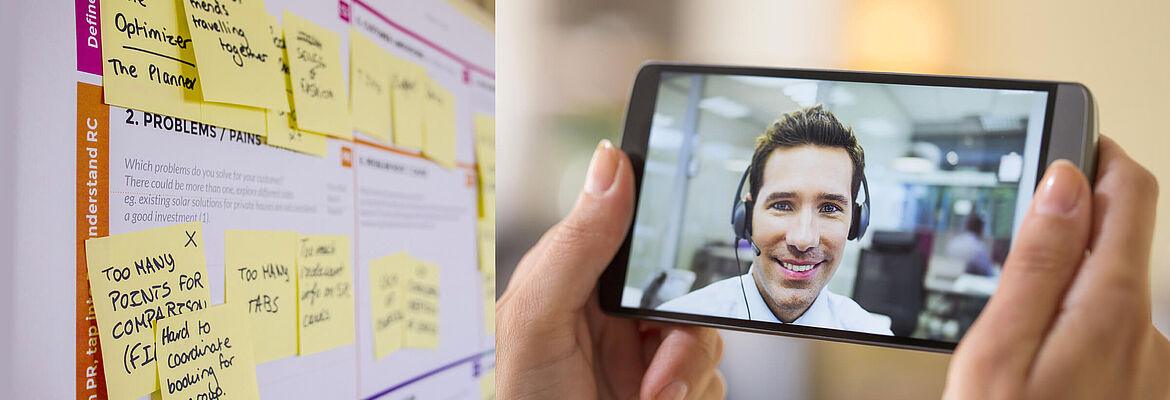Created by Juliane Wiktorin
How mixed teams can work together

We want to build bridges in our projects so that everyone can participate in the success of a project. Bridges between people from different cultures and at different locations. This customer story shows how we combine face-to-face and virtual formats.
“We need a kick-off for our change process, preferably something interactive. However, many participants will only be able to attend virtually. But that’s not so bad, they’ll just drop out for the interactive part. The main thing is that they see the presentations and have all the information.”
This is how our customer formulated the order for us. “Stop,” we thought. It can’t be like that. If the colleagues who are present virtually don’t participate in the workshop part, we don’t have their perspective and we are less able to reach them and win them over to the change process. We have to do it differently.
But first, the exact situation: 70 managers from different areas of the company come together in a large meeting room. Another 25 managers log into a Skype conference. Within a few weeks, these managers, most of whom have very different interests, have to draw up a cross-divisional restructuring program and save millions. Constructive cooperation is important here, and above all a common understanding of what this “constructive cooperation” is.
The kick-off begins with clear words from the Management Board. The team is committed to the goals, the situation is examined in detail once again and the importance of this measure is emphasized. The managers in the room listen intently. They are about to learn a lot for the first time today. At the same time, the camera is focused on the Management Board. The video of his speech is transmitted live into the Skype conference. In a split screen, the dialed-in participants can see both the CEO and his presentation. At the end of his speech, there is time for questions. Some participants come forward in the room. The participants in the Skype conference write their questions in the chat. A moderator collects them and then opens the microphone for the virtual participant with the question. All managers – in the room and in the Skype conference – hear the colleague’s question live.
The same applies to the project manager’s presentation. The participants in the room can experience the same quality of the event as the virtual participants. The success is immediately apparent: None of the virtual participants leave the conference early.
Now it’s time to go into working groups. In eight small groups, the participants discuss the type of collaboration and develop specific go and no-go areas under different headings. From this point on, three Movendo moderators support the work. While two Movendo consultants introduce the participants present in the room to the task and divide up the groups, another Movendo consultant takes over the virtual group. The same content is shown and the structure of the task is made available on pinboards and as a virtual whiteboard. Eight groups work in parallel, seven together in one room, one in their Skype conference.
Almost 100 people from all over the world discuss the framework of their collaboration, everyone is fully involved, everyone becomes part of the result. At the end, a participant from the virtual group presents the results of their work, while the whiteboard from the Skype conference is shown on the screen in the room. The seven face-to-face groups then show their pinboards and are filmed in the process. The colleagues present virtually can listen to everything live.
Our customer is amazed: with simple means, we have managed to involve all colleagues interactively and not degrade them to spectators. We are convinced that everything can be made possible virtually. You just can’t give up too soon.
Author

Juliane Wilktorin
Consultant




